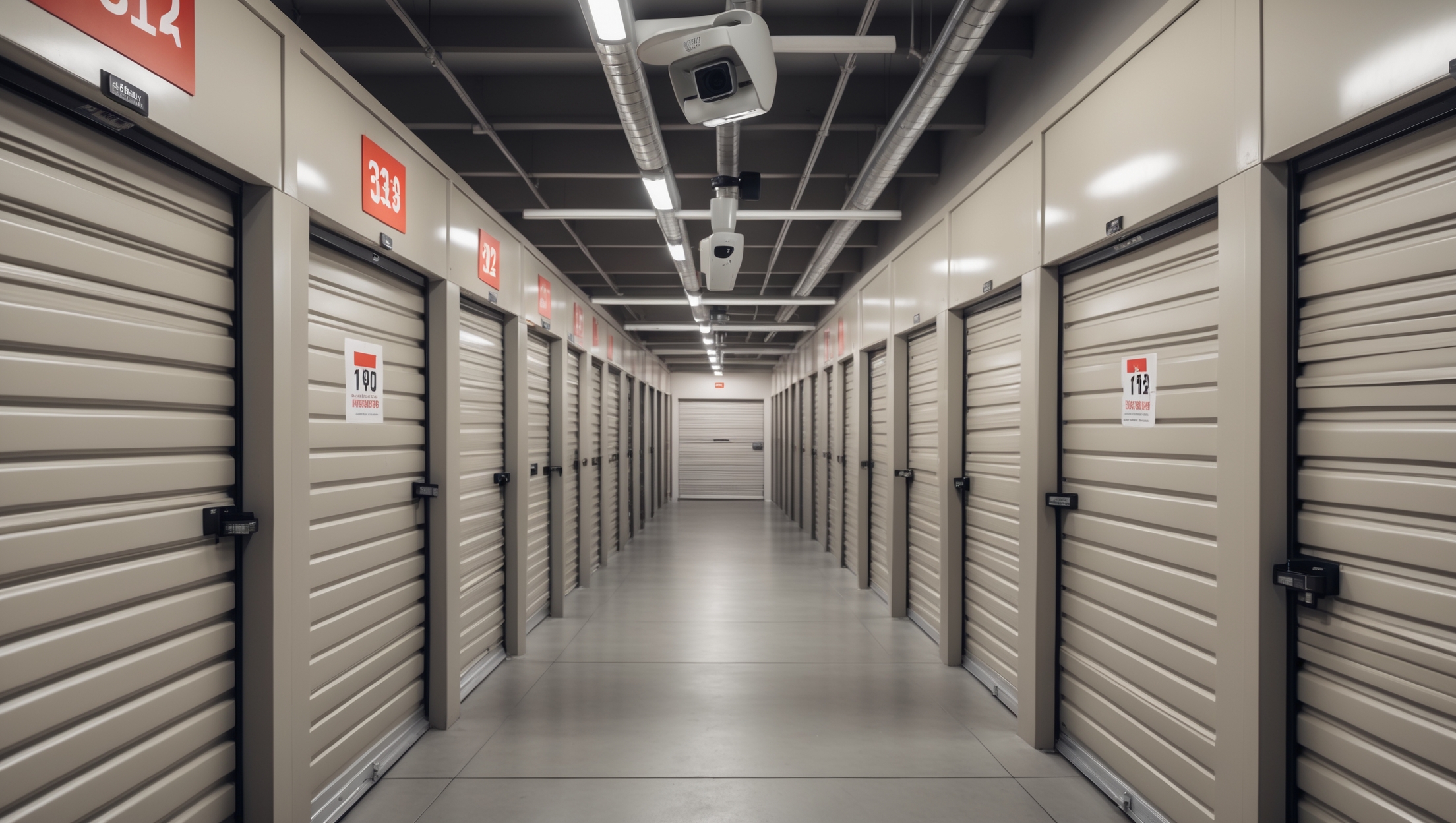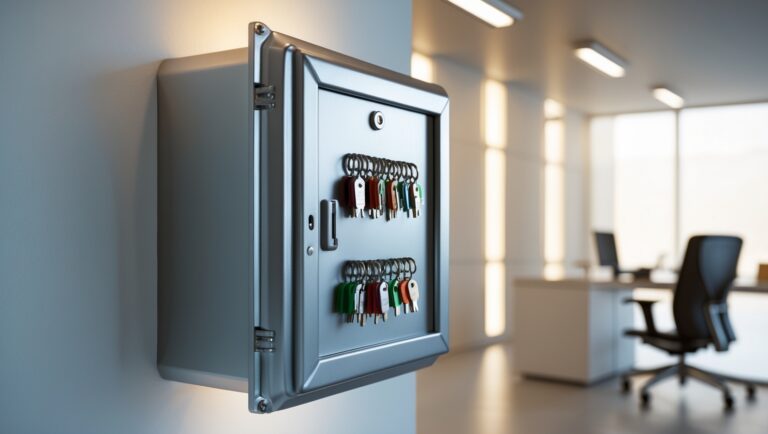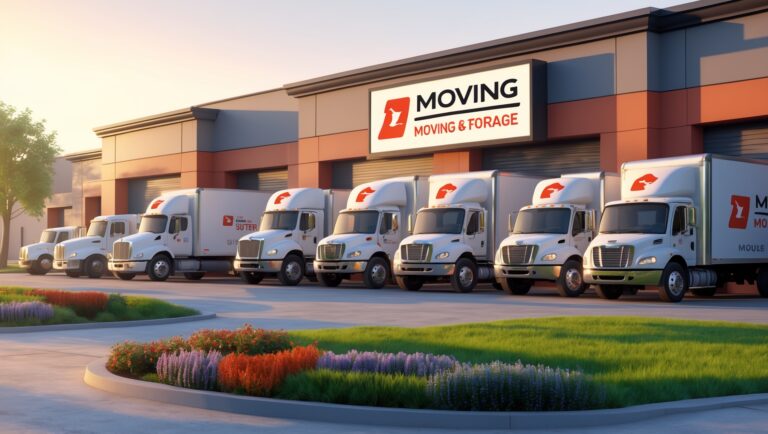Understanding Storage Unit Pricing: Hidden Costs, Surcharges, and How to Budget Wisely
Introduction: The True Cost of Storage Units
Renting a storage unit can feel deceptively simple—choose a size, sign a contract, move in your stuff, and pay your monthly fee. However, the reality is often more complex. Hidden fees, surcharges, and variable pricing structures can turn what seemed like an affordable solution into a costly surprise. If you are new to storage or moving, or even if you’re a seasoned customer, understanding the nuances of storage unit pricing can help you avoid unexpected expenses and budget with confidence. This in-depth guide breaks down the typical (and not-so-typical) costs associated with storage units, uncovers the most common hidden fees, and provides expert advice on setting a realistic budget for your storage needs—whether for a short-term move or long-term decluttering project.
Types of Storage Unit Pricing Models
1. Flat-Rate Monthly Pricing
This is the most common model, where you pay a fixed fee each month for your chosen unit size. However, not all flat rates are truly flat—read the fine print for periodic rate hikes or seasonal adjustments.
2. Variable or Promotional Pricing
Many storage facilities entice new customers with a promotional rate (e.g., “First Month Free” or “50% Off First 3 Months”). These offers may be attractive, but it’s crucial to know the regular rate after the promo ends and how quickly rates may increase.
3. Size-Based and Feature-Based Pricing
Unit size is the primary driver of cost, but added features like climate control, drive-up access, or enhanced security can significantly increase your monthly bill.
4. Location and Demand-Based Pricing
Urban storage units and those in high-demand areas (near universities, city centers, or military bases) are typically more expensive. Seasonality also impacts rates—expect increases during peak moving months.
Common Hidden Costs in Storage Unit Rentals
Advertised prices rarely tell the full story. Here are the most frequent hidden costs you should expect:
- Administrative or Setup Fees: One-time charges for account creation or paperwork processing, often ranging from $10 to $30.
- Lock Purchase Fees: Many facilities require you to use an approved lock, sold on-site at a premium (typically $10–$25).
- Mandatory Insurance: Some facilities require proof of insurance. If you don’t have a policy, you’ll be asked to purchase their in-house coverage, which can add $10–$30 per month.
- Security Deposits: A refundable deposit (often equal to one month’s rent) to cover potential damages or unpaid bills.
- Late Payment Fees: Missing a payment deadline can trigger penalties between $10 and $50, or a percentage of your monthly rent.
- Access Fees: Some facilities charge for after-hours or 24/7 access, or for special features like drive-up loading bays.
- Move-Out Cleaning/Disposal Fees: Leaving the unit dirty or abandoning items may incur cleaning or junk removal charges ($25+).
- Rate Increases: Many contracts allow facilities to raise your rent with 30 days’ notice—even if you’re mid-lease.
- Utility Surcharges: Climate-controlled or powered units sometimes include energy fees, especially in regions with extreme weather.
Budgeting for Your Storage Unit: A Step-by-Step Approach
Step 1: Determine Your True Unit Size Needs
Overestimating your space requirements can cost hundreds in unnecessary rent over the course of a year. Use online calculators or consult with facility staff to select the smallest unit that fits your belongings. Consider stackability and whether you’ll need regular access to items (which may require walkways inside the unit).
Step 2: Compare Facilities and Pricing Structures
Don’t settle for the first facility you tour. Compare at least three locations, paying close attention to:
- Base monthly rates for the unit size you need
- Availability of climate control or specialty units
- Access hours and security features
- Proximity to your home or office
- Online reviews mentioning billing practices or surprise fees
Step 3: Ask Directly About All Fees and Surcharges
Before signing, request a written estimate that lists every potential charge, including:
- Setup/administrative fees
- Mandatory insurance or proof-of-insurance requirements
- Lock fees (and if you can bring your own)
- Deposit requirements
- Any recurring or one-off access, utility, or maintenance surcharges
Step 4: Factor in Rate Increases
Ask how often rates have increased in the past 24 months, and what the policy is for notifying customers. If possible, negotiate a fixed-rate contract for the duration of your stay, or look for facilities that guarantee rates for a set period.
Step 5: Account for Move-Out Fees and Notice Periods
Some facilities require 10–30 days’ written notice to vacate without penalty. Make sure you understand cleaning requirements, and whether you’ll be charged for leftover debris or if you move out mid-month.
Decoding Storage Unit Insurance: What’s Actually Required?
Understanding Insurance Mandates
Many storage facilities require proof of insurance covering your stored items. Standard homeowners’ or renters’ insurance sometimes extends to storage units—check with your insurer before purchasing a separate policy. If you don’t have qualifying coverage, you’ll be asked to buy storage insurance through the facility, which can add $10–$30 per month depending on coverage limits.
Assessing Coverage Needs
Evaluate the value of your stored items and select a policy that covers theft, fire, water damage, and natural disasters. Compare third-party insurance providers to in-house facility offerings; you may find better rates or broader coverage elsewhere.
Specialty Units and Their Additional Costs
Not all storage is created equal. Specialty units come with their own fee structures:
- Climate-Controlled Units: Protect against temperature extremes and humidity, but cost 20–50% more than standard units.
- Drive-Up Access: Allows vehicle unloading directly at your unit door; typically adds $10–$30/month.
- Vehicle Storage: Designed for cars, boats, or RVs; rates depend on size, indoor vs. outdoor, and facility security features.
- Business Storage: May include shelving, power access, or enhanced security at premium prices.
Negotiating Storage Unit Pricing: What’s Possible?
While storage pricing may seem fixed, there’s often room for negotiation, especially with independent or smaller operators. Here’s how to maximize your leverage:
- Ask About Price Matching: If you find a better rate at a comparable facility, ask if your preferred location will match it.
- Request Fee Waivers: Setup fees, lock fees, or insurance premiums may be reduced or waived for longer commitments.
- Negotiate Rate Locks: For longer-term storage, ask for a written guarantee that your rate won’t increase for 6–12 months.
- Inquire About Discounts: Many facilities offer military, senior, student, or referral discounts. Always ask!
Budgeting Tools and Resources
Digital Calculators
Many storage company websites offer space and pricing calculators. Use these to estimate costs for your specific needs, but supplement with direct quotes for accuracy.
Budget Spreadsheets
Create a simple spreadsheet to track all anticipated and potential storage costs, including base rent, insurance, fees, and any recurring surcharges. This visual tool helps prevent budget overruns.
Reviewing Customer Feedback
Online reviews often reveal hidden costs not mentioned in facility tours or brochures. Look for patterns in complaints about billing surprises, rate hikes, or unadvertised fees.
Practical Tips for Minimizing Storage Costs
- Downsize Before You Store: Sell, donate, or trash items you don’t truly need to minimize unit size and rent.
- Share Space: If possible, split a larger unit with a friend or family member to lower overall costs.
- Choose Off-Peak Times: Move in during the off-season (late fall or winter) for the best rates and promotions.
- Pay Upfront: Some facilities offer discounts for paying several months in advance.
- Set Up Automatic Payments: Avoid late fees by enrolling in autopay, but always verify cancellation policies first.
- Regularly Reevaluate Your Needs: If your storage needs change, downsize to a smaller unit or move out promptly to avoid unnecessary charges.
Red Flags: When to Walk Away
- Vague or Incomplete Fee Disclosures: If a facility can’t provide a full breakdown of all costs, proceed with caution.
- Constant Rate Increases: Check online reviews for complaints about frequent or unexplained rent hikes.
- Poor Security or Maintenance: Low prices aren’t worth the risk of theft or damage.
- Inflexible Contracts: Avoid facilities with punitive penalties for early move-out or strict notice periods.
Conclusion: Making Informed Storage Decisions
Storage units can be a convenient solution during life’s transitions, but only when you’re fully aware of the true costs involved. Hidden fees, insurance requirements, and fluctuating rates can turn a budget-friendly rental into an expensive long-term commitment. By understanding the different pricing models, asking the right questions, and using budgeting tools, you can make informed decisions that protect your wallet and your peace of mind. Always request a full written breakdown of all costs before signing, and don’t hesitate to negotiate or shop around for a better deal. Finally, remember that the cheapest option isn’t always the best—prioritize security, cleanliness, and transparent billing practices to ensure your belongings (and your budget) stay safe. With the strategies outlined in this guide, you’ll be well-equipped to avoid surprises and select a storage solution that truly fits your needs.






